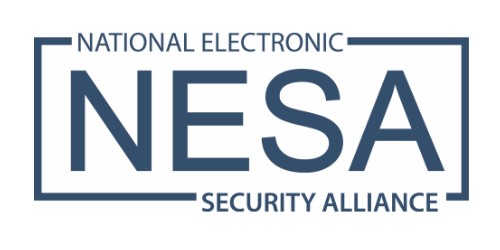
2.3.22 – CE Pro
Research from Parks Associates finds security device adoption is on the rise in broadband households, with many consumers preferring standalone and DIY home security options.
The uncertainty caused by COVID-19 has heightened consumer anxiety about the safety and security of their families and homes. These circumstances have expanded the volume and type of consumers searching for safety-related home solutions.
At the end of 2020, Parks Associates’ research found that 27% of broadband households strongly agreed with the statement, “I am far more concerned about the physical security of my home than I was five years ago” — and that number rises to 43% among households with children.
While residential security system adoption held steady at 26-27% from 2014-2017, a 10% increase moved the needle to 36% adoption as of Q2 2021.
Parks Associates reveals that smart home and security device adoption is on the rise in broadband households, and consumers are embracing standalone devices as well as DIY home security solutions.
As of 2021, smart home security devices like networked cameras and smart doorbells have grown to over 10% adoption each in all broadband households. DIY installed security systems such as Ring Alarm, SimpliSafe, Abode, and DIY offerings from national brands like Comcast and ADT have expanded consumer familiarity with the category.

Lower prices, no contract offerings, and these new installations and services options provide consumers with the ultimate choice in home security, automation and monitoring services. Consumers can determine the optimal combination of installation, monitoring, and automation that provides a sufficient level of security and convenience for their household — a package that is “safe enough” for their needs.
At the same time, broadband service providers have expanded their value-added service offerings to include additional devices, support services, and applications for consumers, including home automation and home security solutions.
Last year, the retail channel dominated as the top channel for standalone smart home devices, with 25% of broadband households reporting their purchase of smart home devices at an online or national retailer. Security dealers are an important secondary channel for smart safety and security devices, while HVAC contractors are an important channel for smart thermostats.
In addition, consumers are beginning to show interest in whole-home security and add-on network services. The role of managed services for consumers will continue to grow along with additional network protections, including cybersecurity, networking monitoring services and other features like parental controls.
Finding Value Through Choice
Consumers’ views on home security installation and monitoring have shifted as more options are provided. Households are experimenting with different offers from security providers and standalone devices, ultimately expanding adoption. Understanding the choices consumers make for home security solutions based on their stage in life helps with better understanding.
Households with children have always been a dominant group for home security systems. Brands have an opportunity to drive recognition and value with the “New Household” and “Young & Established” groups, many of whom will become “Parents” looking to adopt a security system and other relevant services like parental controls.
Though the Young & Established group trails these other segments in security adoption today, they show higher security system purchase intentions than parents, suggesting some latent demand that is not yet being captured in sales.
Self-installation has become a new option for consumers that is popular and widely adopted. Fifty-six percent of all new security system installations in the past year are self-installed. Parents and New Households are more likely to self-install their security systems while “Seniors” and “Empty Nesters” use professional installers. In order to meet the needs of consumers across all life stages, security providers are wise to offer both installation options.
Smart home security devices have similar value propositions as traditional security systems and may serve as an alternative to these systems due to the low cost and easy DIY installation options. While security systems with professional monitoring provide more peace of mind and safety to consumers, smart home devices do not fall far behind. Concurrently, interoperability and installation issues continue to be a problem for consumers.
As of Q2 2021, 36% of U.S. broadband households owned at least one core smart home device and 25% owned three or more. The vast majority of smart home devices are self-installed, but almost one-third of consumers have these devices professionally installed.

Overall, the acquisition of smart home devices is typically incremental rather than all at once. As consumers add devices, they are actively seeking products that will work together and are controlled by one app. Eighty-six percent of smart home device owners indicate they want a unified app to control their devices. This will become a more and more important point as consumers continue to add devices to their network.
Parks Associates will present consumer research impacting the residential security market and address key trends affecting the smart home industry during its flagship event, CONNECTIONS 2022: The Premier Connected Home Conference, in May. In its 26th year, CONNECTIONS is the only connected home event to focus on the use cases and emerging business models that successfully engage consumers and grow revenues in the converging smart home, connected entertainment, and mobile ecosystems.
This research is from Parks Associates recent research on behalf of Comcast Xfinity, Home Security: Choice is the Ultimate Value Proposition.
By Jennifer Kent, VP, Research, Parks Associates & Tam Williams, Contributing Analyst, Parks Associates
Editor’s Note: Parks Associates has partnered with CE Pro’s sister publication Security Sales & Integration for the creation of DIY FYI, a column designed to help dealers keep track of important smart home market developments, what the competition is and whether they want to jump into something they see as a new opportunity. This article originally appeared on the Security Sales & Integration website.
